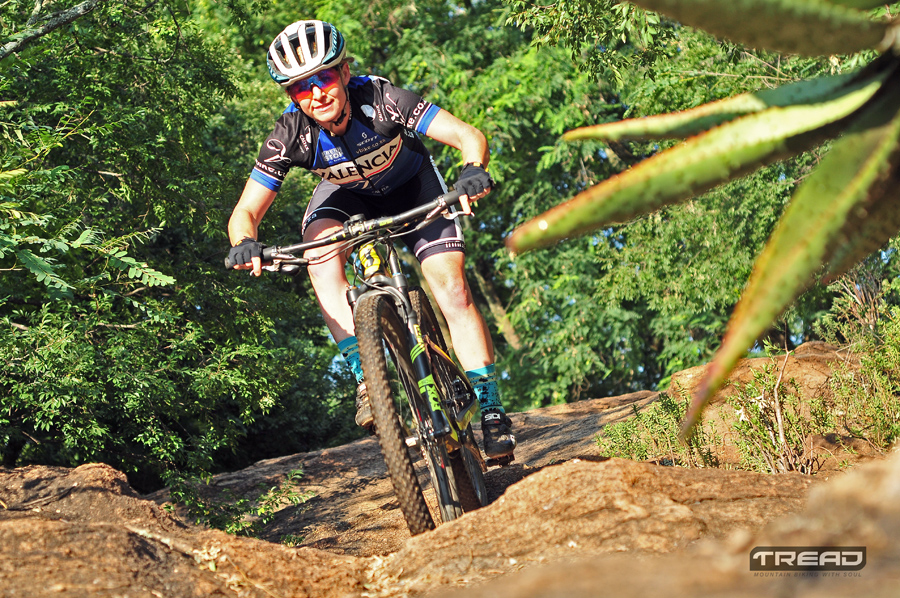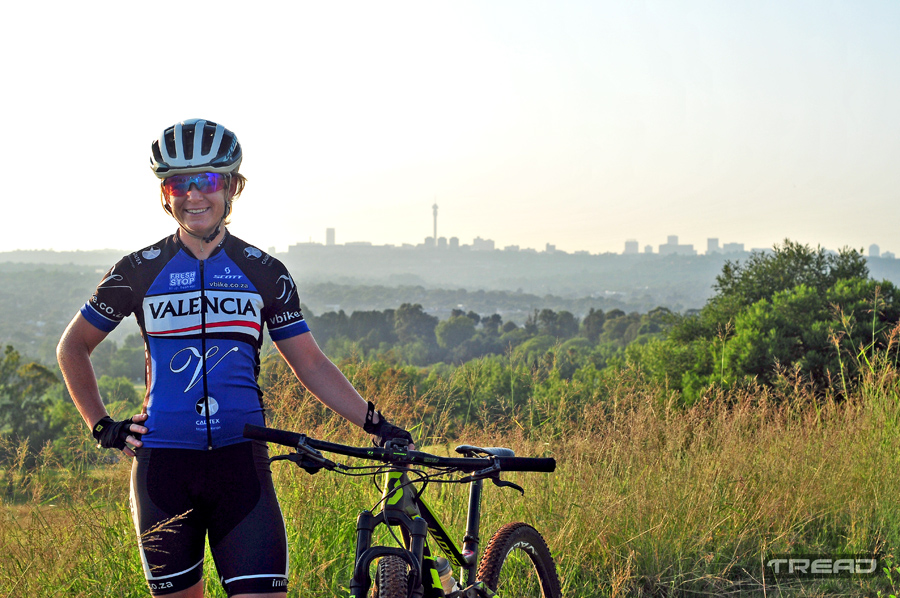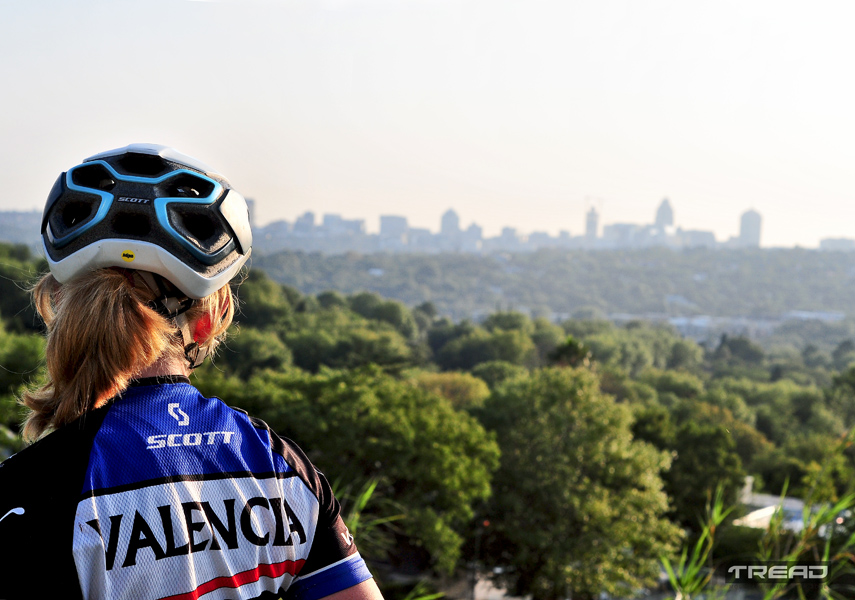At 1.60m, Amy Beth may be small in stature, but that belies the size of the fight she is able to tap into when racing, as well as a love of riding for the pure joy of it.
Starting out in 2008 at age 19 while still working as a hair stylist, Amy first tried out Cross Country (XCO) racing, a mountain biking discipline known for both it’s physical and technical demands.
This saw her develop a natural fearlessness on the bike and a capacity to suffer, whilst learning the hard way about finesse on a bike, at least at first. Some solid racing followed and a resourceful Amy quit her job as a hair stylist to pursue the life of a full-time bike racer in April 2011. Welcome to the dream! Yet living the dream is no easy task in normal circumstances, and without a proper support system, it means Amy has to draw on her tenacity as a bike racer to be equally resourceful off the bike, even with the assistance of sponsors.
The dedication is paying off though, forays into cross country, marathon, stage racing and even some ultra events have seen a more focused and driven personality emerge.
This is buoyed by recent successful results and race partnerships, such as winning the inaugural The Munga, a second in the mixed category of the 2017 Absa Cape Epic and Old Mutual Joberg2C, second at the 2017 SA Marathon Champs, podiums in the National Marathon Series, winning the Momentum Health Cape Pioneer Trek, Iron Bike in Italy and La Leyenda Del Dorado in Brazil and representing South Africa at the World Marathon Champs, are just some of the ‘palmares’ achieved in the recent part of her still-young racing career.
Looking forward with 2018 and beyond in mind, we asked her some burning questions.
By Dino Lloyd
Between 2015 and 2017 your racing seemed to improve overall, with a Munga win in 2015 and a competitive mixed race at the 2017 Cape Epic and a win at Iron Bike. What effect did these or other events have on your overall form?
Races like the Munga and Iron Bike do nothing for physical form but they certainly add a few extra layers of mental toughness!! You finish the Munga as a husk of your former self, riddled with tendonitis and atrophied muscles that are weaker than when you started and it takes minimum 3 – 4 months to get back into racing form.
Iron Bike is physically demanding on another level all together. After 8 days my body had changed, besides being battered and bruised from head to toe, I developed bigger calves and arms from hiking up Alps for hours upon hours, my technical skills reached new heights from the insane, sometimes impossible descents! I did a 24 hour race in 2015 where I did 418km of 7km laps and won overall men and women, that was pretty intense!
After each of these races I was burnt out but the mental strength and fight I gained from blowing my perceived physical limits out of the water is unparalleled.
2015 and 2016 were years I used to see how far I could push those limits, it was far from conducive to a professional elite racing season but I needed that phase and I’m so glad I went through it. I now experience no FOMO or need to compete in ultra-events but I often refer back to the darkest dark moments when I am in a race situation which requires that extra vasbyt and mental fortitude. I remind myself that I’ve been through worse.
As well as racing mixed with Grant Usher, an established racer in his own right. You also partnered with both Sonya Looney at La Leyenda Del Dorado in Brazil in 2017 and Ariane Luthi for Cape Pioneer Trek, events you won. How does taking on the different partnerships affect the dynamics of your racing?
Team dynamic will change slightly with each partner, but any experienced stage racer knows that one simply needs to communicate and support each other in a way that will get you to the finish line the fastest and smartest. In a mixed race, the man is usually the obviously stronger partner. In this dynamic Grant would do everything to make my life easier; he’d carry my extra bottle, all spares (I sometimes jokingly call him my pack mule) He’d also go ahead to water points and fill up my bottles so I didn’t have to stop. He would always be in the front with me in his slip and he’d push me when I needed it most. In this sense roles are more defined but mixed racing can be extra hard for the woman and racing with Grant has helped me learn to suffer.
In women’s racing you are often closer in strength and honest communication is key. I loved racing with Sonya, Ariane, and Sam last year; each have completely different personalities and riding styles, but those factors only play a minor role in team dynamics. The best thing is not to overanalyse dynamics and keep it simple, communicate, and make sure you both give it 100% and support each other in respective weaknesses while capitalising on each other’s respective strengths. Being able to share the elation, pain, magical moments and hardships with a team mate is something quite special!
Do you have a specific focus on events or disciplines for 2018?
Competing in 2 the national XCO races and in 2 World Cups last year was a shock to my system but rekindled my love for XCO! My goal for 2018 is to go back to my XCO routes, make sure I train and prepare accordingly, and follow the national and world cup series. I am currently approaching companies with a sponsorship proposal which also covers finances and expenses, that would allow me to achieve these goals. I will also be competing in stage races where the calendar allows, starting with Tankwa Trek and aiming at the Cape Epic. With so many unknowns for the year ahead, I will just take it one pedal stroke at a time and do the best I can to gain the support required to achieve my goals!
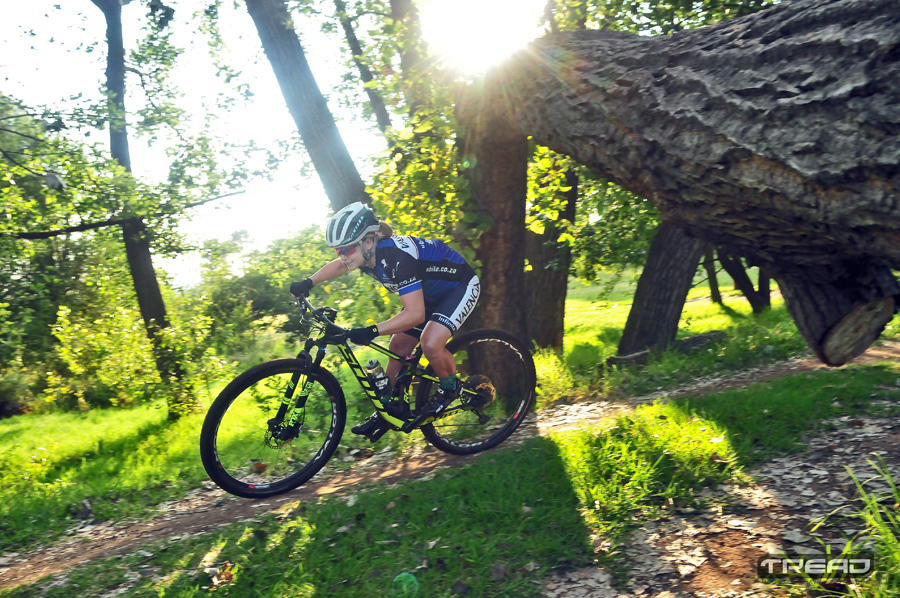
Given your shorter height, you’ve been looking at different setups on the bike, part of the consideration is wheel sizing to accommodate bike fit. Talk us through this?
Wheel size vs person size… The eternal wheel debate! After much thought my current thinking is to go 650b (27.5) dual and 29 hard tail (with a dropper for XCO). I’ll explain why. I rode a 650b hardtail for 2 years and a 29er dual sus for the following 2 years. My conclusion: I love the handling and nippiness of the 650b, but the hardtail combined with smaller wheels is a very “hard” ride and falls behind specifically on the long bumpy drags in our stage and marathon races. In XCO, it’s the big rock gardens that I struggled with. What I love about 650b is that I feel like I’m on the bike as opposed to inside of it. It is super responsive up climbs and I can really throw it around on the descents, through corners, and over jumps.
Given my height (or lack thereof) and my short legs relative to my torso, this puts me in a position that no matter the geometry, I am actually too small for a 29er. The small Scott Spark I rode this year was fantastic and possibly the closest I could get to fitting onto a 29er but I still had to almost force myself to fit on it. With a super short and negative stem, the seat / handlebar drop was only slightly below level. This affects climbing because no matter how low I go over the bars, the wheel still wonders. I also don’t have the control through corners and over jumps that I have on a 650b.
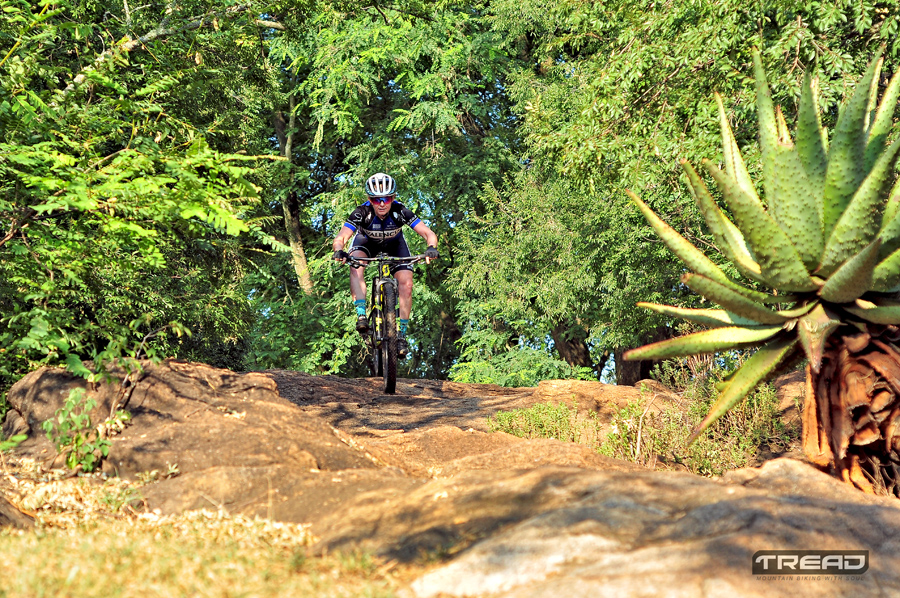
I hopped onto a 650b dual suspension bike at the end of December and within minutes I felt like I was one with the bike and it made me want to play and go fast, this is an important feeling to have when you get on a bike! As a smaller person, I don’t put out the same power that bigger riders produce. The wheels are harder for me to get rolling and the bike is a bigger percentage of my body weight. I need to play to my strengths which are climbing and descending; I would never be able to put in an attack on a flat road anyway. I would go 29er hard tail because of the weight and the fact that the geometry is smaller in proportion than a dual suspension. I still love and miss the feeling of riding a hardtail and I firmly believe that the hardtail is not dead and there is a place for it in XCO as well as marathon racing. In XCO I love riding a dropper seatpost but the combined weight penalty of a rear shock and dropper is too significant. On some courses if I had the choice between dropper and rear shock, I would choose a dropper.
For the average – tall person who fits on a 29er, the benefits are undeniable but I am not that person and my current thinking is that the cons outweigh the pros for me.
As soon as I get the opportunity, I will take all 3 bikes (29er dual, 29er ht, and 650b dual) for test laps on an XCO course such as Wolwespruit or Thaba Trails to confirm my choice!
On average how much of your time and what does a typical training day take, as well as off bike responsibilities?
A typical day takes a lot more time that people sometimes think! An average week for me would be 1.5 – 4 hour training ride and 30 mins of core / stretching per day, 1 hour Yoga twice a week (a new venture for me), a 2 hour gym session twice a week, and a massage once every week or 2 . Resting up and getting enough sleep are just as important as riding and need to be factored in. Social media also takes time and at the moment I am working hard and sending out my sponsorship proposal which is taking up most of my day. I am also completing my studies and do skills clinics during the week as well as on free weekends. I like to keep busy and if I find myself being bored I’ll help Grant out at his shop Sprocket and Jack, read a book, or do housework (as a last resort).
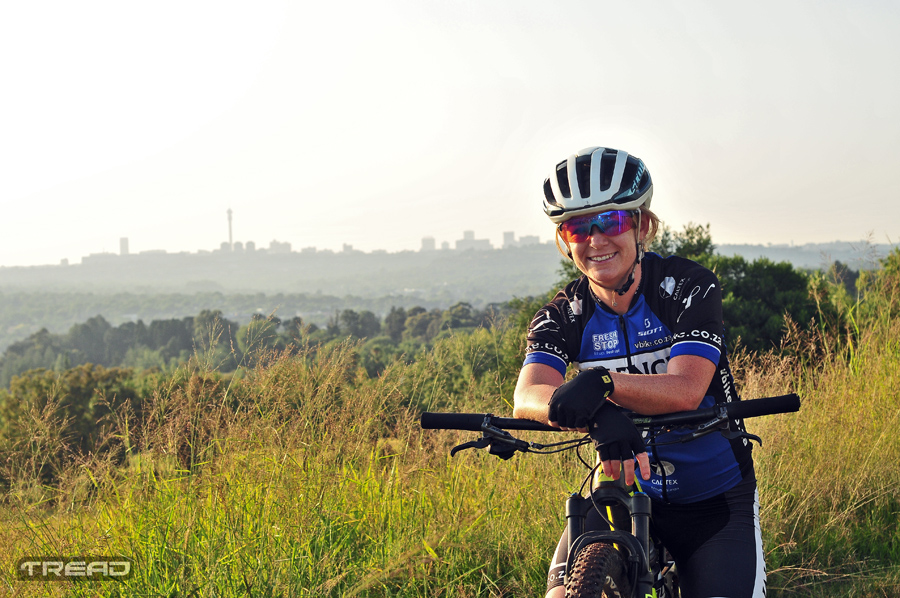
Events have started paying out equal prize money for elite women categories, do you feel this is making an impact for those women pursuing elite racing?
Absolutely! Times are definitely changing, the level of racing has stepped up hugely in the past few years, I’ve had people tell me how exciting our racing has become and in some instances I’ve been told that the ladies race in a particular event was more exciting than the men. Having equal prize money and media coverage plays a big part in this, not just because of financial gain, but it shows respect for our efforts as we race, train and sacrifice just as much as the men and it is also our bread and butter.
It is a chicken / egg situation because having less prize money undermines our efforts and makes us feel disrespected which is definitely not conducive to growing the sport. I understand from an organiser’s point of view that there are fewer women racing so having the prize money equal but not as deep in the field is totally acceptable in my opinion and can always be adjusted as the field deepens. It is amazing seeing so many events stepping up and equalizing prize money and media coverage and the level of women’s racing in 2017 is testimony to the positive shift we are seeing.
Is this being supported and encouraged, from within and outside women’s categories?
Most certainly. It is a topic amongst the ladies and the shift is motivating and has made a difference in the level of racing. Many people in other categories and spectators have taken note and comment in a very positive light.
What more could be done?
I think the media coverage could still be stepped up in some events and but as I said we are going rapidly in the right direction and I think we have reached the tipping point. I see a lot of up and coming talent on a school level with the Spur series and schools focusing on cycling as a sport. In a few years I think we will see a big boom of competitive cycling in men and specifically women which is very exciting.
Any advice you feel is important for anyone starting out riding or considering racing?
I have so much advice and knowledge to share! I’ll put a few in bullet point:
- Have something to fall back on, being a professional athlete is a rocky road and doesn’t last forever! (boring advice done for the day)
- Have fun: Don’t ever stop having fun! As soon as riding becomes a chore, take a break and / or re-evaluate why you ride. If that break is riding cool trails to rekindle your love and brush up on skills then so be it. Scheduling at least one trail shredding session a week is a great idea to keep skills and enjoyment up.
- No short cuts! Sometimes it seems an impossible feat to get strong enough to compete against and beat the best. It can be tempting to seek short cuts but the reality is that there are none. For most people it takes a long time, if you do your best, enjoy the journey, and trust the process instead of being frustrated by it more than likely you’ll get there.
- Don’t ever think of yourself as inferior or superior to anyone. This is easier said than done, and it took a long time for me but this is a great cause of mental self-sabotage.
- Push your limits and learn to hurt. Your body can hurt and suffer far more than you think.
- Stay true to yourself. It’s easy to get caught up in hype or obsessed with results and “status” but always stay grounded and remember where you came from and why you ride.
- Don’t judge yourself by others’ standards. If you finished a race with a bad result but you gave it your absolute all and emptied the tank, then you have succeeded. Don’t see it as a failure, see it as a personal success and the result merely as an opportunity to reevaluate training and improve.
You’ve set yourself some big team goals from 2018 onwards by drawing up a detailed proposal motivating a full team setup. Tell us a little bit about this and where can one send a request for the proposal?
Yes, the time in my career has come for me to take the next step and look for a bigger overall sponsor on finances and support. Valencia have always called themselves more of a “stepping stone” to greater things but what they have done for me and my career far exceeds merely a stepping stone and for that I am indescribably grateful and will always maintain a fond and loyal relationship with the local Nelspruit bike shop.
Things are coming together slowly but excitingly as I have 4 significant product partners on board namely Biogen, Trek, Squirt and Continental. I am an avid believer in these products and the energy of those involved, this is paramount as an ambassador to any product. The big thing now is finding a corporate company where our values are aligned and sees the opportunity and values in partnering with me to focus on racing goals and importantly the goals of growing women’s mountain biking and mountain biking in general, and promoting health and fitness in the corporate world.
Sending out a sponsorship proposal to corporate companies is currently my #1 priority, so if I can take a personal punt towards interested parties to meet and / or request my proposal they can please email me at amy@overthebars.co.za.

All rights reserved


